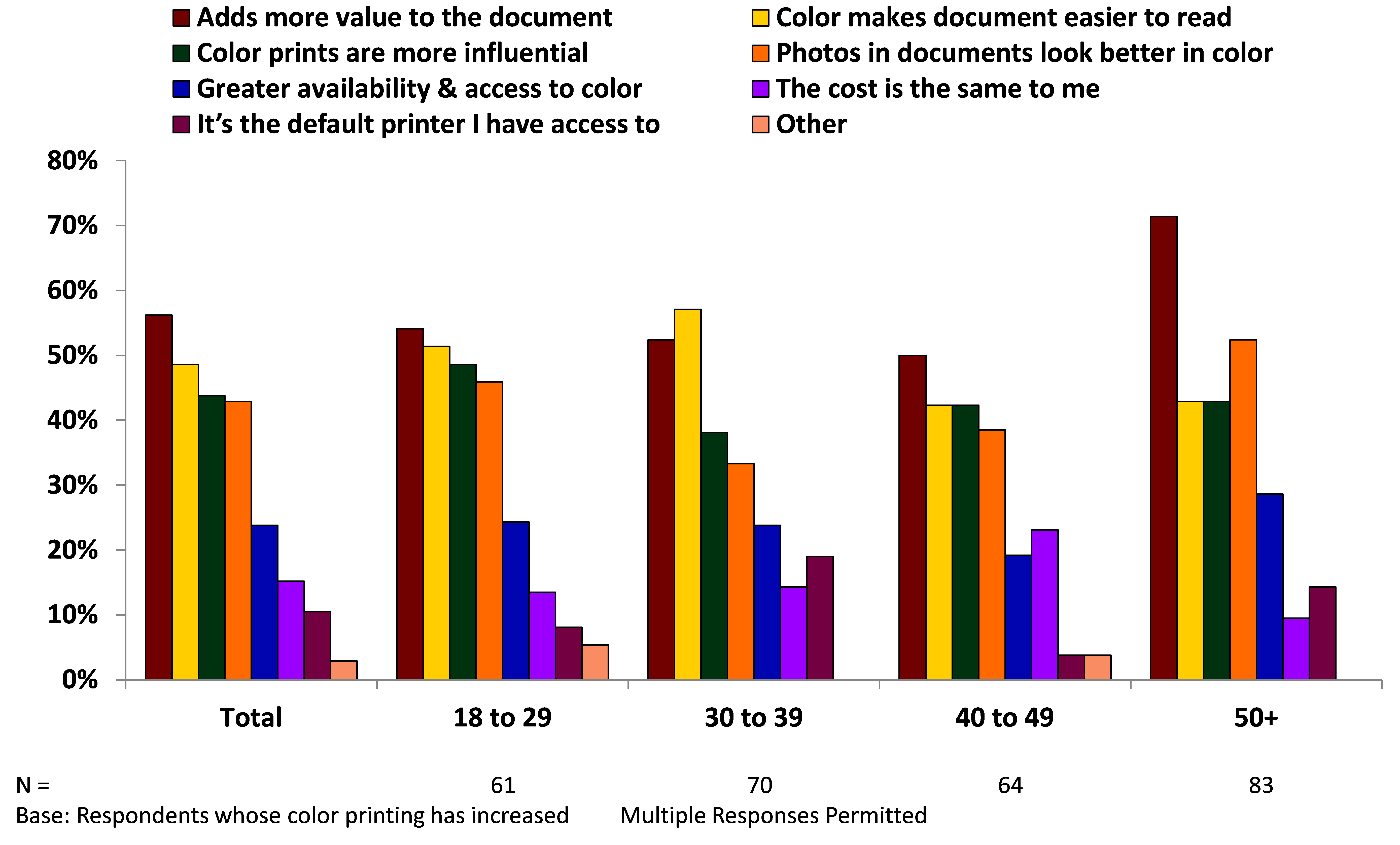There is little argument that color has value. Splashes of color draw reader’s attention to key points and conclusions. Color can make documents look more professional and thus more convincing or authoritative. There is little argument that a color bar chart is easier to view and accurately interpret than a monochrome or grayscale chart.
Color has value
According to recent research by Keypoint Intelligence/InfoTrends, the main reasons for increasing the use of color printing are:
- Adds more value to the document
- Makes the document easier to read
- Color prints are more influential
- Photos look better in color
Figure: What is driving the need for more required color printing?

Source: Future of Office Printing (Keypoint Intelligence/InfoTrends, 2016)
Certain documents more likely to be printed in color
Keypoint Intelligence/InfoTrends also asked users which documents they are most or least likely to print in color. The table below shows that users generally appear to be making reasonable choices when it comes to color printing.
Table: Document most and least likely to be printed in color
| Most likely to be printed in color | Least likely to be printed in color |
| Marketing materials | Documents requiring a signature |
| Photos | Customer billing, invoices |
| Greeting cards | Correspondence, letters, memos |
| Presentations | Forms, applications |
| Maps | Task lists, appointments, calendars |
| Reports for external use | Emails |
One could argue there are cases when the documents least likely to be printed in color might benefit from color. For example, overdue invoices with red highlights could instill a sense of urgency in the recipient. Task lists with upcoming deadlines in red could help workers prioritize their time. Color could be used in forms to draw attention to specific sections that may commonly be overlooked.
Smart use of color can improve efficiency or results.
Helping users make the best choices
Few people say they use more color simply because it’s more available, or they don’t personally pay for the added cost. This suggests that office users do think about color and the best time to use it. But that doesn’t mean they might not benefit from additional help making good choices around color printing.
Rules-based printing software can help users make better choices when printing in color. It takes into account questions like:
- Is the document for internal or external use?
- Is the document for formal or informal use?
- It the document a draft or final version?
- What is the length of the document?
- Does the document use charts or just highlight color?
- Does the color document need to be printed in color?
- Will multiple copies be printed?
- Do the documents need to be stapled or bound?
The software will analyze the documents to be printed and—with input from the user—direct the print (with the right settings) to the most appropriate device.
Depending on the size of the office, there may be multiple devices on hand that can print color—but one is a better choice than another. For a one-page draft document with highlight color, a nearby single function printer may be the optimal choice.
But if the document is long, a lower-cost, higher-speed device that’s farther away may be the best choice. For documents that require the best quality, printed on both sides of the paper in several sets, a department class color copier/multifunction printer (MFP) might make the most sense.
The rules-based software will help guide these choices. If you’re interested in implementing this type of solution, contact us and we can get you the information you need.
3 takeaways
- Color frequently makes documents easier-to-understand or more persuasive.
- Users appear to be making good choices around color printing, but might benefit from additional help.
- Rules-based software solutions can help users improve the value of color, while also directing prints to the right equipment for the job.